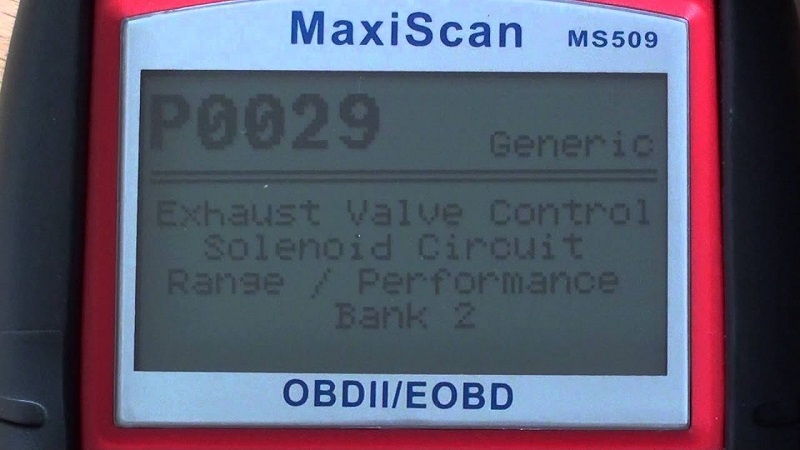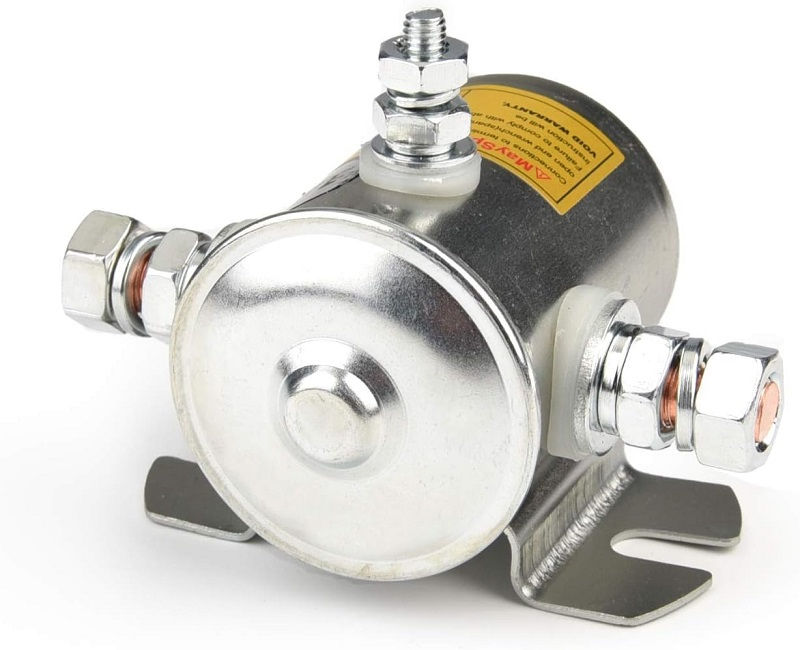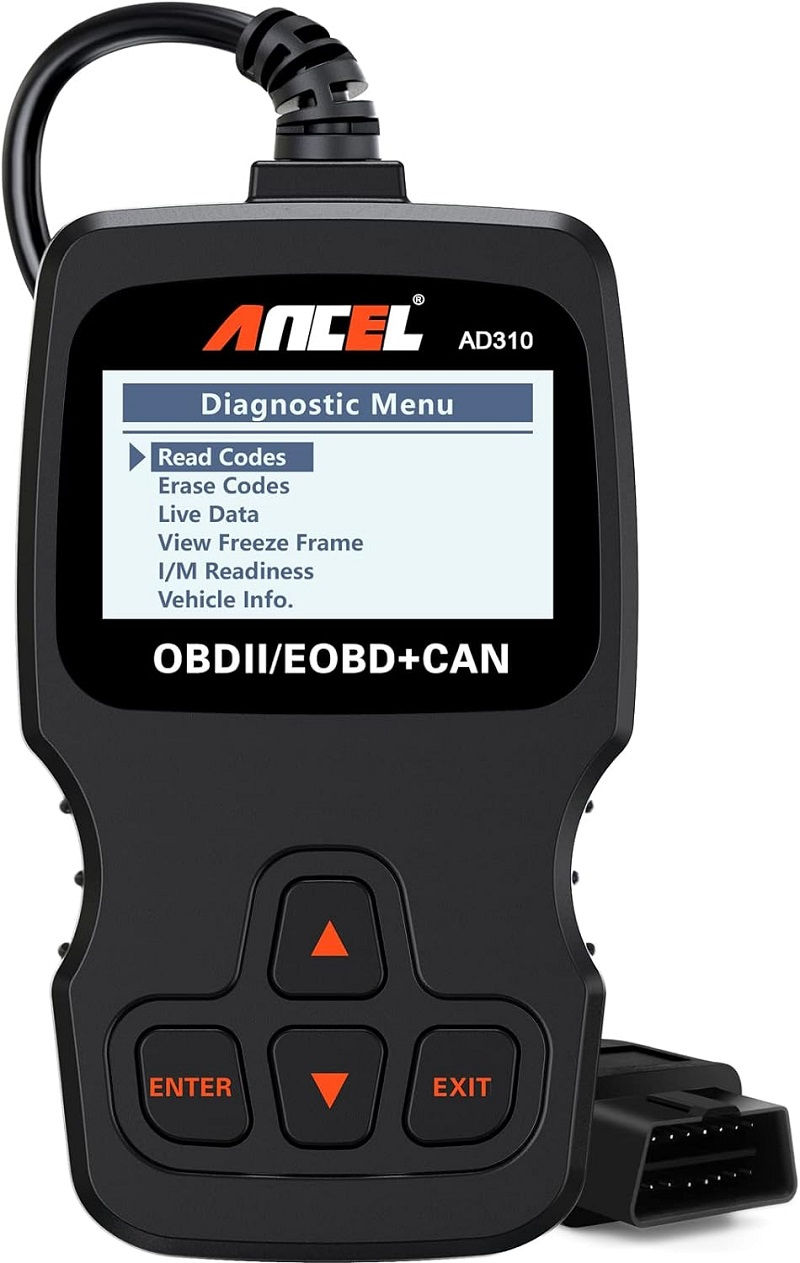This post contains affiliate links. This means I will make a commission at no extra cost to you should you click through and make a purchase [ “As an Amazon Associate, I earn from qualifying purchases.” ]. Read the full disclosure here.
Understanding P0029 Exhaust Valve Control Solenoid Circuit Range/Performance Bank 2 GuideMechanic.Com In the realm of automotive diagnostics, encountering a trouble code like P0029 can leave car owners feeling perplexed and concerned.
Among the myriad of diagnostic trouble codes (DTCs) that modern vehicles can produce, P0029 stands out as a specific indication of an issue related to the exhaust valve control solenoid circuit in Bank 2 of the engine.
In this article, we delve into the intricacies of this diagnostic trouble code, shedding light on its meaning, potential causes, and steps to address it effectively.
See Also: P0027 Code Exhaust Valve Control solenoid Circuit Range/Performance Bank 1
P0029 Exhaust Valve Control Solenoid Circuit Range/Performance Bank 2
Understanding P0029

P0029 is a generic OBD-II trouble code indicating that the engine control module (ECM) has detected a range or performance problem within the exhaust valve control solenoid circuit for Bank 2 of the engine.
Bank 2 typically refers to the side of the engine where cylinder number 2 resides in a V6, V8, or V12 engine configuration. It’s important to note that Bank 2 is not universal and can vary depending on the engine layout, with Bank 1 being the side containing cylinder number 1.
The exhaust valve control solenoid plays a crucial role in regulating the timing and flow of exhaust gases within the engine. It operates under the command of the ECM, which adjusts the solenoid’s duty cycle to optimize engine performance, fuel efficiency, and emissions.
When the ECM detects that the actual performance of the exhaust valve control solenoid deviates from the expected range or parameters, it triggers the P0029 trouble code.
P0029 Exhaust Valve Control Solenoid Circuit Range/Performance Bank 2
Common Causes of P0029
Check out this MaySpare Max Transient 200A Trombetta 12V Solenoid Relay 3 Terminal Heavy Duty Winch Marine 24106 SPST 12 Volt Solenoid

Diagnosing the root cause of a P0029 trouble code requires a systematic approach and thorough inspection. Several factors could contribute to the emergence of this fault, including:
Faulty Solenoid:
The most common cause of P0029 is a malfunctioning exhaust valve control solenoid. Over time, these solenoids can wear out, leading to electrical or mechanical failures that disrupt their operation.
Wiring Issues:
Damaged or corroded wiring connections, particularly those leading to the solenoid, can impede electrical signals and cause irregularities in solenoid performance.
Poor Electrical Connections:
Loose or poor electrical connections at the solenoid or ECM can interfere with signal transmission and result in circuit performance issues.
Oil Flow Restrictions:
Buildup of sludge, debris, or carbon deposits within the engine’s oil passages can obstruct the flow of oil to the solenoid, affecting its functionality.
ECM Malfunction:
In rare cases, a malfunctioning ECM may inaccurately interpret sensor data or fail to control the solenoid properly, triggering the P0029 trouble code.
P0029 Exhaust Valve Control Solenoid Circuit Range/Performance Bank 2
Diagnosing and Resolving P0029
Check out this ANCEL AD310 Classic Enhanced Universal OBD II Scanner Car Engine Fault Code Reader CAN Diagnostic Scan Tool-Black

Addressing a P0029 trouble code typically involves a series of diagnostic steps to identify the underlying cause accurately. Here’s a general outline of the diagnostic process:
Code Retrieval:
Begin by using an OBD-II scanner to retrieve the trouble codes stored in the vehicle’s ECM. Verify the presence of the P0029 code and take note of any accompanying codes, which may provide additional insight into the issue.
Visual Inspection:
Perform a visual inspection of the exhaust valve control solenoid and its associated wiring harness. Look for signs of damage, corrosion, or loose connections. Repair or replace any damaged components as necessary.
Check Oil Levels and Condition:
Ensure that the engine has an adequate supply of clean oil at the proper viscosity. Inspect the oil for signs of contamination or degradation. If necessary, perform an oil change to eliminate any potential oil-related issues.
Test Solenoid Operation:
Use a multimeter to test the resistance of the exhaust valve control solenoid and compare it to the manufacturer’s specifications. Additionally, apply battery voltage and ground to the solenoid to verify proper operation.
Inspect Oil Passages:
If the solenoid tests within spec, inspect the engine’s oil passages for obstructions or restrictions. Clean or flush the passages to remove any buildup that may be impeding oil flow to the solenoid.
Check ECM Functionality:
If all other components check out, consider the possibility of an ECM malfunction. Perform diagnostic tests to evaluate the ECM’s ability to control the solenoid and interpret sensor data accurately.
Clear Codes and Test Drive:
After addressing any identified issues, clear the trouble codes from the ECM’s memory using the OBD-II scanner. Take the vehicle for a test drive to ensure that the P0029 trouble code does not return.
P0029 Exhaust Valve Control Solenoid Circuit Range/Performance Bank 2
Conclusion
See Also: P0028 code Intake valve Control Solenoid Circuit Range/Performance Bank 2
The emergence of a P0029 trouble code can signal potential issues within the exhaust valve control solenoid circuit of Bank 2 in the engine.
While diagnosing and resolving this fault may require some technical expertise and diagnostic equipment, understanding the underlying causes and following a systematic approach can facilitate an effective resolution.
By addressing the root cause of the P0029 trouble code promptly, vehicle owners can restore optimal engine performance, reliability, and fuel efficiency.
If in doubt, consulting with a qualified automotive technician or mechanic can provide invaluable assistance in diagnosing and repairing the issue.
- Dealer Food Trucks for Sale Near Me - July 13, 2025
- Repo Food Trucks for Sale Cheap - July 13, 2025
- Seized Food Trucks for Sale at Auction - July 13, 2025
